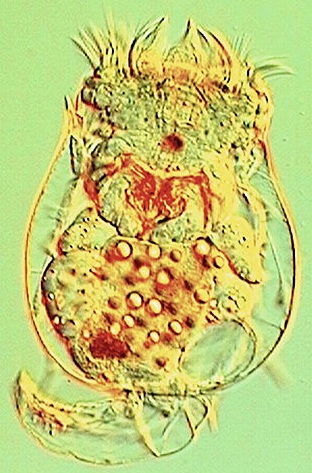Mycobacteria get all the advantages of sex with none of the downside
Despite the sales pitch, sex is frankly a bit of a hassle, isn’t it? The champagne, the flowers, the desultory conversations in overpriced restaurants – and all with no guarantee of passing your genes onto the next generation. These costs, and the dependence on finding a mate, are massive downsides of sexual reproduction. And yet we’re all at it. From educated fleas to cold Cape Cod clams. Surely there must be something very special about sex to dissuade us from creeping off to our rooms alone and practicing binary fission?
And indeed there is. Asexual reproduction works very efficiently if you’re a bug capitalising on a set of genes that perfectly suit you to your environment, multiplying rapidly without having to find a mate. But if the environment changes, you’re stuck with that set of genes, and the future may not be too rosy for your offspring. This is where theory suggests the advantage of sex lies. What if two of you, with your slightly different sets of genes, could get together and shuffle your genomes to create different combinations of those genes, generating an array of subtly varied kids to explore strategies for survival in the new hard times?

Experiments bear this out – a paper published by PLOS Biology last year (also see the excellent accompanying Primer) used rotifers with the option to follow sexual or asexual lifestyles to show that while sex had a short-term cost, in the long term it does pay off. The study showed that this was indeed because sex breaks down fixed combinations of genes, and generates a wider range of characteristics in the offspring. In the long run, getting together with a mate and shuffling your genomes is a good bet on an uncertain future. And why stop at two sexes? – some critters go further and have seven.
That’s all fine and dandy for us eukaryotes, but why should bacteria miss out on all the fun? Can’t they reap the benefits of sex, too, or are they condemned to a monastic hereafter? We already know that many bacteria can transfer chunks of their genomes between individuals – a process known as conjugation. But to get the mosaic intermingling that sexual reproduction gives you, the bacterium would have to repeat conjugation umpteen times, bringing extra costs and delays.

A new study just published in PLOS Biology shows that some bacteria can have their cake and eat it. Keith Derbyshire and colleagues were looking at a relative of the TB pathogen, the dismayingly named Mycobacterium smegmatis (yes, that is where it was isolated from, and no, you’re unlikely to see it on the label of your favourite probiotic yoghurt). The authors allow different strains of M. smegmatis to conjugate and then analyse the genomes of the resulting transconjugants. Rather than containing a single substantial chunk of the donor strain, the transconjugant genomes were intricate patchworks of donor and recipient, showing a degree of shuffling that is reminiscent of sexual reproduction. They call this phenomenon Distributive Conjugal Transfer, and speculate that other related mycobacteria might use the same strategy to fast-track their way out of the potential evolutionary dead-end of asexuality.

The coolest aspect of the study is where the authors then exploit the distributive conjugal genetics of M. smegmatis in a manner strikingly akin to the linkage studies used by human geneticists to pinpoint the genes for diseases such as cystic fibrosis or Huntington’s disease. Instead of comparing sexual progeny with and without a disease, as human geneticists would have done, the authors compare mycobacterial transconjugants, asking whether they are donors or recipients in the conjugation process. Amazingly, by identifying which parts of the genome correlated with donor/recipient status, this enabled them to narrow the 7000 mycobacterial genes down to a list of 6 genes that must be responsible for determining who wears the trousers.
It remains to be seen how widespread this phenomenon is, and whether it stretches to globally important human pathogens like M. tuberculosis or M. leprae. Although these bugs haven’t quite joined us in our sexual revolution, the study shows that some bacteria do take the opportunity to mingle, and we can exploit the results to probe their genetics.
Todd A. Gray, Janet A. Krywy, Jessica Harold, Michael J. Palumbo, Keith M. Derbyshire (2013). Distributive Conjugal Transfer in Mycobacteria Generates Progeny with Meiotic-Like Genome-Wide Mosaicism, Allowing Mapping of a Mating Identity Locus PLoS Biology, 11 (7) DOI: 10.1371/journal.pbio.1001602

Lutz Becks, Aneil F. Agrawal (2012). The Evolution of Sex Is Favoured During Adaptation to New Environments PLoS Biology, 10 (5) DOI: 10.1371/journal.pbio.1001317
